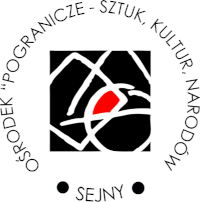Graduated in Ukrainian Philology from the Kyiv-Mohyla Academy. Worked as an art director in the Є bookstore chain and program coordinator at the Czech Center and Polish Institute in Kyiv. Co-editor (with Oleh Kotsarev) of the anthologies Ukrajinska avanhardna poezija: 1910-1930 roky (2014) and Ukrajinskyj poetycznyj avanhard (for the Bulgarian Academy of Sciences, 2018). Author of poetry collections: Chervoni cholovichky (2009) Verde (2015). A poetry collection translated by Aneta Kamińska, Wszystkie możliwe rzeczy (Poznań, 2019) and Odbicie (Pogranicze Publishing House, 2024), were published in Poland. Her poems have also been published in anthologies: 30 poems from abroad. Young Ukrainian Poetry (2012), Female Portrait in Reverse Perspective. 12 Poets from the Czech Republic, Slovenia and Ukraine (2013), Letters from Ukraine (2016). She is the author of children's books: Tajemnycia Mohylanky i znyklyj klucz (2020), Misiac nad Kinburnom (2020), Sonia ta hra koloriw (2022). She illustrated the children's book Tatkowi notatky by Andrej Chadanowicz.
Lives in Bucha near Kyiv.
“When I was going to Krasnogruda, just like we all write some plans for residences, I wrote a project about a collection of short stories called Zemlemir. The Ukrainian word "zemlemir" is an old word that tells about the times before the 1917 revolution in Ukraine. My great-grandfather was a zemlemir (surveyor) - a man who granted peasants estates, measured estates. I collected some of the stories that I already had, so I started this process of putting together a collection. And I also wrote part of an essay about Zuzanna Ginczanka. She is a Polish poetess, and her book was published by the Borderland Publishing House, with poems and a foreword by the researcher. And this helped me a lot, because there is a book in Ukraine called Żar-ptak, but it is only a small collection of poems. It was here that this context came to me unexpectedly, when I was sitting at a concert in the beautiful White Synagogue in Sejny, looking at the names of the Jews of Sejny, which are written all around the perimeter on the walls, and I also thought about her. Because all of these are the same threads of one event. So I spent this time with Ginczanka and I really like her poem "Non omnis moriar", it is a unique poem, I know that it was even attached to her case in court. She actually describes a woman who gave her up as a Jew to the Germans. There are few texts in literature that appear in court cases. She is evidence in court, it is exceptional. In this context, I thought about all the events in Ukraine: can these poems, some of the poems, I do not mean all of our poems, that were published in the "In the Face of War" Library of Ukrainian Poetry, be used as a document?"


